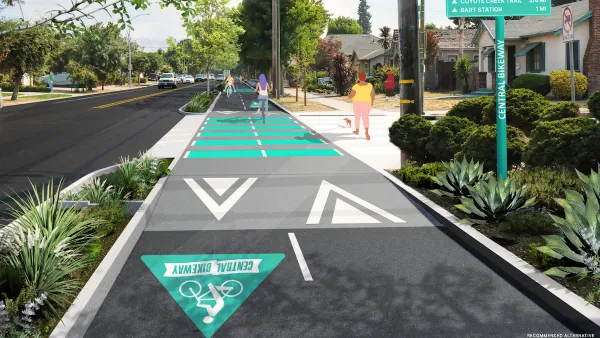Building sustainable, equitable cities of the future, must take into account the important and often overlooked tasks performed by informal workers.

In a blog post for the International Institute for Environment and Development (IIED), Sonia Dias outlines how cities can harness the power of informal workers to build resilience and economic diversity, particularly in countries where informal economies are a thriving part of the local economy. “Recognising street vendors, domestic workers, home-based workers and waste pickers by acknowledging their key role in urban economies and their co-production of urban plans, will help create cleaner, greener, socially responsive, vibrant, and ultimately resilient cities.”
As Dias explains, the Women in Informal Employment: Globalizing and Organizing (WIEGO) research policy network has released a roadmap called Rights to the City that charts a set of principles that “envisions cities with diverse and inclusive economies that ‘safeguard and ensure access to secure livelihoods and decent work for all inhabitants.’”
These principles include “Recognition that most informal activities are legitimate efforts by the urban poor to forge their livelihoods in often hostile policy environments,” “Regulations that enable access to public space and natural resources for informal livelihood activities,” and “Provision of basic infrastructure and transport services in informal settlements and informal workplaces.”
“The ability of cities to withstand shocks and crises is predicated by the ability of communities, informal settlements and different sectors of the economy – including informal ones – to prepare, react, resist and bounce back.” To this end, Dias writes, “Recognition and strengthening of informal economies may be a key way to increase urban resilience.”
FULL STORY: Building resilient cities with the resilience of informal workers

Planetizen Federal Action Tracker
A weekly monitor of how Trump’s orders and actions are impacting planners and planning in America.

Silicon Valley ‘Bike Superhighway’ Awarded $14M State Grant
A Caltrans grant brings the 10-mile Central Bikeway project connecting Santa Clara and East San Jose closer to fruition.

Amtrak Cutting Jobs, Funding to High-Speed Rail
The agency plans to cut 10 percent of its workforce and has confirmed it will not fund new high-speed rail projects.

California Set to Increase Electric Truck Chargers by 25%
The California Transportation Commission approved funding for an additional 500 charging ports for electric trucks along some of the state’s busiest freight corridors.

21 Climate Resilience Projects Cancelled by the EPA
The federal government has pulled funding for at least 21 projects related to farming, food systems, and environmental justice to comply with one of Trump’s early executive orders.

Trump Executive Order on Homelessness Calls for Forced Institutionalization
The order seeks to remove legal precedents and consent decrees that prevent cities from moving unhoused people from the street to treatment centers.
Urban Design for Planners 1: Software Tools
This six-course series explores essential urban design concepts using open source software and equips planners with the tools they need to participate fully in the urban design process.
Planning for Universal Design
Learn the tools for implementing Universal Design in planning regulations.
Yukon Government
Caltrans
New Jersey Institute of Technology
Mpact (founded as Rail~Volution)
City of Camden Redevelopment Agency
City of Norman, Oklahoma
City of Portland
City of Laramie





























